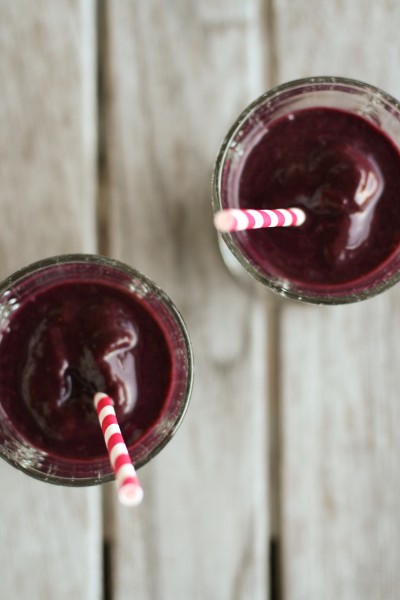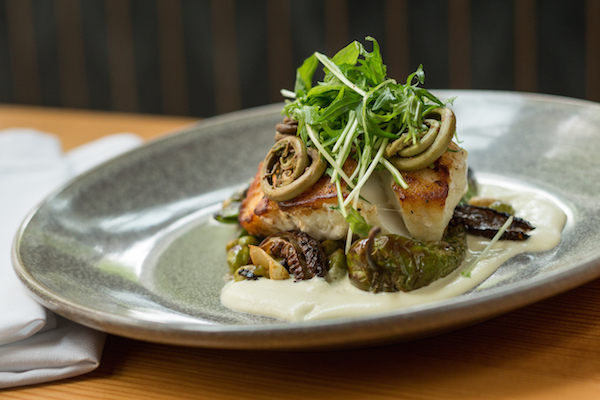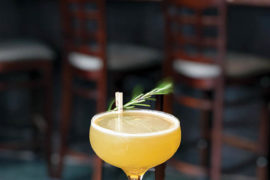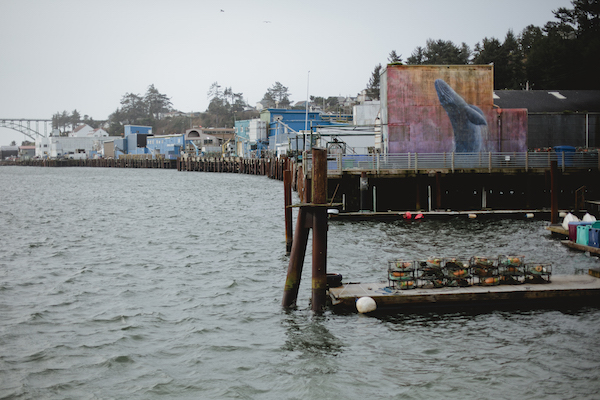Wine consumers and wine tourists can raise their glasses in a toast to the times. Prices have dropped, and wineries are courting tourists through their tasting rooms and wine clubs. The industry is in the hands of hundreds of small, family-owned wineries where visitors can often meet and talk with the people who craft the wine. The state’s wild, scenic beauty, its reputation as a foodie culture and a genuine place to taste wine attract many out-of-state tourists. And instead of all roads leading to Newberg or Dundee as they did in the ’80s and ’90s, wine lovers can get their fix in tasting rooms from Hood River to Ashland.
Ten years ago, Oregon was home to 135 wineries and 9,800 wine-growing acres. Today, the Beaver State is more aptly called the Oenophile Dream with 400-plus wineries and 19,600 wine-growing acres. Oregon’s reputation, which almost exclusively centered on the Pinot noir grape, has expanded to Southern Oregon with Chardonnays, Rieslings and the Spanish Tempranillo, to the Columbia Gorge with Gewürztraminer and into the southern Willamette Valley with Pinot gris. While competition has heightened, the collaborative spirit among growers and vintners remains. The result is a world-class top-to-bottom tasting tour that starts at Oregon’s southern border and goes north through various wine-growing regions and then east along the Columbia River Gorge. For wine drinkers, the new normal is variety and affordability.
“For wineries, there’s going to be a new normal, but we don’t know what that will be yet,” says Pat Dudley, a co-owner of Bethel Heights Vineyard near Salem and a wine pioneer in Oregon. “Up through 2006, we couldn’t make enough and charge enough for Pinot noir,” she says. “Even newcomers could sell a $75 Pinot noir without lifting a finger. The recession meant wineries worldwide had to tighten belts.”
The Willamette Valley has the greatest concentration of wineries in Oregon and will continue to focus on excellent Pinots, according to Adelsheim.
David Adelsheim, who co-founded Adelsheim Vineyard in Newberg in 1971, says now is a wonderful time to be a wine consumer. After years of selling wine primarily through a national distribution network, his winery opened its first tasting room in 2008. Now Adelsheim is making rare upper-end wines at $50 to $80 a bottle to sell directly to consumers through its tasting room and wine club, while continuing to produce wines that are sold in wine stores in the $20 to $50 range. “We’ve become almost two wineries,” he says. The Willamette Valley has the greatest concentration of wineries in Oregon and will continue to focus on excellent Pinots, according to Adelsheim.
Joe Dobbes, who started Dobbes Family Estate winery in 2002 in Dundee, agrees that high-end Pinot is alive and well. Nevertheless, he hedged his bet with lower-priced wines under the label, Wine by Joe, and another label for Trader Joe’s grocery stores. The strategy worked. In 2010, Wine by Joe and the Dobbes Family Estates ranked second in Oregon in overall production.
At Sundance Wine Cellars in Eugene, which claims the largest selection of Oregon wines, owner Gavin McComas is stunned by the number of growers who are bringing in heavily discounted but excellent wines.
While Pinot noir continues to dominate, other varietals are gaining traction. When Ed King started King Estate Winery near Eugene in 1991, he saw a potential for Pinot gris—a light, dry white produced in small quantities. “We focused on building a national business for Oregon and for ourselves,” he says. He started selling in Florida where local seafood paired well with Pinot gris and where warm weather offered a nice long white wine season. “I’m sure the first Pinot gris many people try is from Oregon,” says King, who also grows Pinot noir and other varietals, and whose vineyard was the state’s largest producer in 2010.
Just as King saw an opportunity for Pinot gris, other people started experimenting with warm-climate varietals. Earl Jones, a research dermatologist who loved Spanish wine made from Tempranillo grapes, learned that his favorite wine was produced only as a cheap wine in the United States. So in the late 1980s, he scoured the country, seeking the ideal place to grow this warm climate grape. He bought an old homestead and planted vines in 1995 in Southern Oregon’s Umpqua Valley in the vineyard he called Abacela. Those first vineyards in the Northwest produced award winning Tempranillo from the start, topping all nineteen Spanish Tempranillo entries in the 2001 San Francisco International Wine Competition. He later expanded into other warm climate varietals and now sells wine throughout Oregon and twenty other states.
1859 spoke with these and other winegrowers and winemakers in five wine regions, or American Viticultural Areas—Walla Walla Valley, Columbia River Gorge, Willamette Valley, Umpqua Valley and Rogue Valley—for a statewide tour of the industry today.
Willamette Valley AVA
The Papa of Pinots
200-plus wineries
120 tasting rooms
The Willamette Valley worked for decades to earn a reputation as one of the world’s premiere wine areas. David Lett of Eyrie Vineyards brought Pinot noir to the Willamette Valley in 1965, with Dick Erath, Charles Coury and others following on his heels. They believed that Oregon could be a great wine-growing region and, in 1979, Lett proved it. He entered his 1975 Pinot noir in an international wine tasting in Paris. It made the top ten against France’s best labels and put Oregon on the map. The incredulous French winemaker Robert Drouhin staged a rematch the following year, and Lett’s Pinot placed second behind a Drouhin 1959 Chambolle-Musigny. In 1987, Drouhin acquired land within sight of Lett’s vineyards in Dundee.
That excellence built over forty years has migrated to other regions and has elevated the status of all Oregon wines. The Willamette Valley is the largest and oldest of Oregon’s wine regions, with six sub appellations. Tourists, the wine press and aficionados arrive by the thousands each year. Pinot noir remains king, but the area also grows other cool-climate varietals, primarily Pinot gris, Chardonnay and Riesling.
With nearly 200 wineries stretching from Portland to Eugene, the choices may overwhelm visitors. Wine collector Donnie Castleman suggests focusing on one area, such as Dundee, where you can visit big, traditional estate wineries like Archery Summit, Domaine Drouhin and Domaine Serene. Or take Highway 240 west out of Newberg to hit smaller artisan wineries such as Penner-Ash Wine Cellars, Beaux Frères and Bergström. “When you visit these places, you get a sense of the passion they have for their craft,” Castleman notes.
Harry Peterson-Nedry, who started Ridgecrest in 1980 and Chehalem in 1990, says the Willamette Valley has transitioned from the early technical innovators of the ’70s to today’s winemakers—often children and even grandchildren of the pioneers. “We’re now in the most exciting change—passing the baton successfully to the next generation,” he says. His assistant winemaker is his daughter, Wynne Peterson-Nedry, a chemist with a master’s degree from the University of California-Davis Viticulture and Enology program. “This validates that we didn’t just start something that will be a flash in the pan,” he adds.
Jim Arterberry Maresh in the Dundee Hills is a third-generation winemaker, raised in the family vineyard his grandfather, Jim Maresh, bought in 1959. “I started making wine at 21 and am lucky to have access to the region’s best vines for Pinot noir and Chardonnay,” he says. His grandfather; mother, Martha Maresh; and her husband, Steve Mikami, farm and sell him grapes. He then converts them into award-winning wines.
The young vintner, 27, is bullish on the industry’s future. “It is difficult to produce excellent Pinot from young vines,” he says. “Oregon is a couple decades away from having vineyards across the board that are in the prime of their lives. When the common winemaker has vines thirty and forty years old, Oregon is going to dominate Pinot noir. When our vines get into their fifties and sixties, we can challenge French growers.”
Jim Prosser is also bullish for Oregon wines but built his winery, J.K. Carriere, “by the bootstraps.” He credits early Oregon wine pioneers—Erath, Domaine Drouhin and Chehalem, among others—for teaching him the trade. He started his winery in 1999 in a 100-year-old barn outside of Newberg. He makes Pinot noir and Chardonnay, but Pinot has his heart. “It’s a connoisseur’s wine—people get there after a lifetime of consuming,” he says. “Give me a big Cabernet or Merlot, and it rips my face off. Eventually you get to the subtle nature of Pinot noir.”
Unlike so many other industries, with Willamette Valley vintners there’s an unusual level of collaboration. “This is a time when most regions, given the economy, could be spitting at each other,” says Peterson-Nedry. “We don’t do that here. Oregon is very much about raising the water level to float all boats.”
At the south end of the AVA, smack in the middle of the state, is the growing wine region around Eugene. “We’re finding that a lot of people are bouncing off the well-traveled wine routes and venturing down the middle and into the southern Willamette Valley,” says Steve Girard, co-owner of Benton-Lane Winery. “People pulling into one of our little wineries are likely to be greeted by the owner, who might drag them out into the vineyard.”
Like so many others, Pinot noir captured Girard’s heart. “It’s the sexiest red varietal,” he says. “It goes with more things, and it’s luscious and easy to drink.” He and his wife, Carol, searched the world for the best place to make Pinot noir and found it at 100-hundred-year-old Sunnymount ranch near Monroe. They planted their first vines in 1989, and built the Benton-Lane Winery in 1997. Its Pinot noir and Pinot gris have been ranked among the top 100 wines in the world by Wine Spectator, and Wine & Spirits.
Stay in Newberg Allison Inn & Spa, theallison.com
Eat in Newberg Painted Lady, thepaintedladyrestaurant.com
Stay in Dundee Inn at Red Hills, innatredhills.com
Eat in Dundee Dundee Bistro, dundeebistro.com
Umpqua Valley
Variety—The Spice of Life
19 wineries
19 tasting rooms
When Richard Sommers planted vines in 1961 in Roseburg—despite California naysayers insisting that grapes couldn’t grow in Oregon—he became the state’s father of modern winemaking. He nurtured several generations of winemakers at his HillCrest Vineyard.
Scott Henry, another upstart in Roseburg, developed a trellis system adopted internationally for increasing grape yield. Henry planted his first vines in 1972 and built Henry Estate Winery in 1978, making it among Oregon’s oldest.
The Umpqua Valley now has sixty vineyards and close to twenty wineries. One popular destination is Reustle-Prayer Rock Vineyards’ wine cave tasting room. Located mid-valley, Reustle- Prayer took the “Small Winery of the Year” award at the 2010 Riverside International Wine Competition in Temecula, California.
Terry Brandborg of Brandborg Winery in Elkton says Umpqua Valley is more like one hundred valleys, each valley with its own unique microclimate. Winds off the Pacific bring moisture and coolness to the north end, whereas the south end is warm and dry. This diversity lets it showcase both cool- and warm-climate varietals. Brandborg’s focus is on cooler varietals, such as Pinot noir, Riesling and Gewürztraminer.
Abacela in the south valley staked its reputation on warm-climate varietals, such as Tempranillo, grown in the north of Spain. “One of the most important examples of somebody changing a focus and almost an industry is Earl Jones at Abacela,” says David Adelsheim. “He created an alternative vision for Oregon wine and showed the state that it was possible to grow something besides Pinot and sell it in New York and the rest of the world, not just in your backyard.” This spring, Abacela will open a new 4,000-square-foot tasting room and wine center, designed by Jones’s daughter, Hanna Jones.
Stay in Roseburg Delfino Vineyards B & B, delfinovineyards.com
Eat in Roseburg Dino’s Ristorante Italiano and Alexander’s Greek Cuisine, alexandersgreekcuisine.com
Columbia Gorge
Cool to Warm Varietals in Two States
40 wineries
20 tasting rooms
This region, like Walla Walla, has vineyards in Washington and Oregon with a diverse climate and growing conditions. This AVA bridges the climate zone from the wet end of the Cascades to the semi-arid desert on the east. Cool-climate varietals, such as Chardonnay, Gewürztraminer and Pinot noir grow near Hood River, whereas Zinfandel, Syrah, Merlot and other warmth-loving varieties are found at the eastern end, mostly on the Washington side. This region has about forty wineries and fifty vineyards, all family owned, with roughly equal numbers on both sides.
James Mantone, president of the Columbia Gorge Winegrowers Association and founder of Syncline Wine Cellars on the Washington side, believes the area holds great potential for new wineries and tourism. With Hood River as the hospitality hub, people can leave the Portland airport and be in a wine-tasting room within an hour, Mantone says.
Rich Cushman, born and raised in Hood River, says the fruitgrowing area has been “fabulous for wine grapes.” For twenty-five years, he made wine in the Willamette Valley and the Columbia Gorge but now focuses on wines in Hood River, including his own label, Viento, and Phelps Creek, where he directs winemaking. Sommelier Landon says Phelps Creek has become the top producer in the region for Pinot noir and Chardonnay, with winemakers Cushman and Alexandrine Roy teaming up to produce what she calls, “beautiful, balanced wines.” The tasting room has an amazing view of Mt. Hood and great wine.
Cushman believes the AVA is about five to ten years behind other Oregon wine regions, but the learning curve is already in place. “We need to continue to focus on quality if we’re going to have a long life in the wine business,” he says.
Stay in Hood River Columbia Cliff Villas, columbiacliffvillas.com
Eat in Hood River Celilo, celilorestaurant.com and Brian’s Pourhouse, brianspourhouse.com
Rogue Valley including Applegate Valley
Heat-Loving Wines Gaining Momentum
34 wineries
30 tasting rooms
Adventure seekers or Shakespeare buffs with a hunkering for a nice Merlot or Zinfandel should head straight to Southern Oregon. The well-established tourist trade in Southern Oregon plus the diversity of varietals in this sunny locale have helped the wine industry thrive. Since 2000, the number of wineries has grown from a few to nearly forty, with more expected in the next decade.
Cave Junction, a small town just north of the California border in the Illinois Valley, is home to Oregon’s top wine producers, both started in 1986: Bridgeview Vineyards and Foris Vineyards. Bridgeview makes moderately priced varietals and is known for its line of Blue Moon Chardonnay, Riesling and Pinot noir. Foris focuses on reasonably priced Pinot noir and several whites, including Chardonnay, Gewürztraminer, Pinot blanc, Riesling and Muscat. According to 2010 statistics published by the Oregon Wine Press, Foris ranked ninth in total production with an estimated 40,600 cases, and Bridgeview was fourteenth with 34,200 cases.
Smaller producers such as Troon Vineyard and Wooldridge Creek in the Applegate Valley, and RoxyAnn in the Rogue Valley are exploring new ideas for growing the industry.
Kara Olmo and husband, Greg Paneitz, teamed up with Ted and Mary Warrick of Grants Pass to open Wooldridge Creek Winery in 2005; they make several heat-loving reds and a few whites, 90 percent of which they sell through their wine club.
Interestingly, they’ve also borrowed an idea from brewers: wine on tap. They put finished wine in a stainless steel, five-gallon keg. Argon rather than CO2 pushes wine through the keg. There’s no spoilage, oxidation or waste, and production costs are lower, Olmo says. “Our customers can have beautifully fresh wine that tastes exactly as it did when it left the winery—at $6 a glass versus twice that at wholesale.” Wooldridge sells its kegs to restaurants in Southern Oregon and Portland. “It’s been a fantastic model for us, with business growing tremendously,” Olmo says.
Troon Vineyard, established in 1972 by Dick Troon, is now owned and operated by the Martin family. “We’ve embraced the idea of variety and vintage variability,” says Chris Martin, manager. Zinfandel is a big part of what Troon does, but he’s not convinced it’s the grape of Southern Oregon. “We have twenty-three different varietals with stars in every vintage.”
RoxyAnn Winery on the east side of Medford produced its first wines in 2002 on land that had produced fruit for a century. Managing director Michael Donovan says his winery caters to customer preferences and sells 65 percent of its production through its tasting room—a refurbished 1800s barn. “People are surprised when they come here and have a glass of Cabernet Sauvignon,” he says. “It’s taken us a while to emerge from the shadow of Pinot noir.”
Martin, president of the Southern Oregon Winery Association, notes that the region is at crossroads and change is in the air. “We can muddle along, or do what Walla Walla has done in the last five years.” That is, bring vintners together to spread the message that Southern Oregon is a region with great wineries, making terrific wines that aren’t all Pinot noir.
Stay in Southern Oregon Elan Guest Suites, elanguestsuites.com and Country House Inns in Jacksonville or Grants Pass, countryhouseinns.com
Eat in Southern Oregon Aja Restaurant, Grants Pass, Café Dejeuner, Medford, quality-catering.com and Beasy’s on the Creek, Ashland, beasysrestaurant.com
Walla Walla Valley
Vineyards on the Rocks
121 wineries
100 tasting rooms
In Oregon’s far northeastern corner is a rocky section of floodplain perfect for grape growing. Rock is good for drainage, a key factor in grape growing, according to Tim Kennedy, an owner of Don Carlo Vineyard in Milton-Freewater. The winery makes premium reds—Cabernet Sauvignon, Merlot, blends—and Chardonnay. “We’re starting to get a lot of recognition for the high quality wines on the Oregon side of the AVA,”Kennedy says, acknowledging its better-known Walla Walla, Washington AVA members.
The Walla Walla Valley, a sub-appellation of the larger Columbia Valley AVA, covers portions of both Oregon and Washington and is a favorite of wine tourists seeking an alternative to the Napa Valley-style experience. It has 121 wineries, mostly on the Washington side, but half the region’s grapes come from Oregon. Varietals are largely warm-climate types—Cabernet, Syrah and Merlot.
Awash in sweet onions and rolling wheat fields, the town of Walla Walla offers visitors upscale restaurants, cafes and tasting rooms in a rural setting. Milton-Freewater, eight miles to the south, has fewer amenities but is gaining a reputation for having “more interesting soils,” according to sommelier Erica Landon. She says it also has some of the best wineries. Cayuse winemaker Christophe Baron, a Frenchman with a cult following, credits minerals in the soil for his award-winning wines. His winery is in Walla Walla, but the vineyards are all in Milton-Freewater. So strong the demand is for Cayuse’s wine that he sells them as futures contracts a year before release.
In addition to Don Carlo, the Oregon side of the Walla Walla AVA, is home to such vineyards as Buty and Zerba Cellars.
Caleb Foster worked in many Washington wineries before starting Buty (pronounced like beauty) in 2000. He says the Walla Walla Valley has been a beautiful place for the re-emergence of wine. His 2002 Rediviva of the Stones, a Syrah/Cabernet Sauvignon blend, won the Seattle Magazine’s Wine of the Year.
Zerba Cellars is one of Landon’s favorites. Owners Cecil and Marilyn Zerba, and winemaker Doug Nierman produce “food-friendly, balanced wines with elegance,” she says. The winery has racked up many awards and welcomes visitors to its tasting room in Milton-Freewater, one of seven in town.
Stay in Walla Walla The Marcus Whitman Hotel, marcuswhitmanhotel.com
Eat in Walla Walla Brasserie Four







